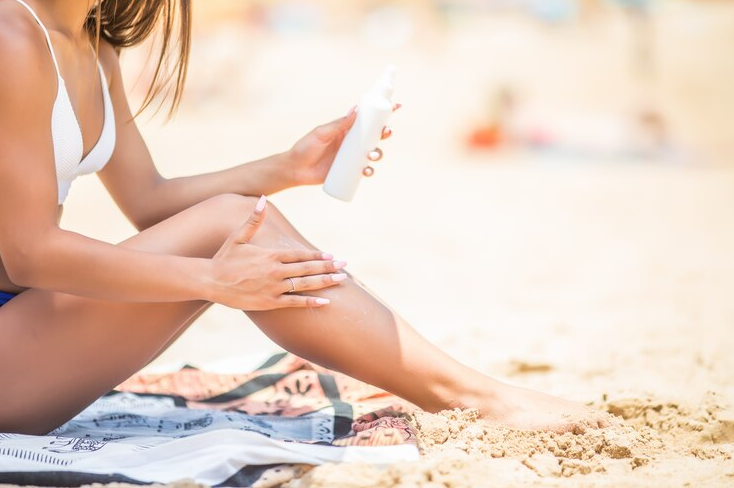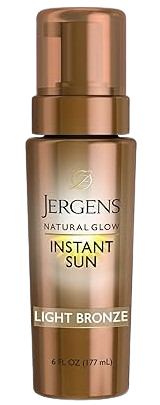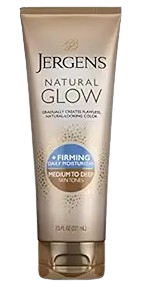There is a common question in the industry today, especially by skincare newbies: “Does sunscreen prevent tanning?”. But the truth remains that, even though most people know that excessive sun exposure should be avoided, they still strongly desire to spend time in nature, at a theme park, or on the beach to have fun.
Maybe you’ve heard certain old wives’ stories about tanning, like how you have to burn before you acquire a “base tan” or whatever, but there’s one more burning question: Does sunscreen prevent sunburn or tanning? And has become very trendy in the industry nowadays. You can still get tan even if you’ve faithfully applied your maximum SPF. But ultimately, there’s one major problem with tanning while putting on sunscreen: human mistake.
In this post, we will help you discover the truth regarding sun protection and tanning. So, continue reading to learn more about sun protection, tanning, and how to acquire a bronze glow without sunburn.
Let’s first examine the true definitions of tanning and sunscreen before delving into the question of whether or not they can prevent tanning. This will paint a vivid image of the subject matter’s reality for us.
What is Tanning?
When UV rays from the sun come into contact with your skin, you get tanned. There are two kinds of UV radiation: UVA and UVB.
There are three main layers to your skin:
- Epidermis: The visible top layer
- Dermis: The majority of the nerves, follicles, and glands are found in the second layer.
- Tissue beneath the skin: The last and third layer is made up of arteries, veins, and fatty tissues.
The kind of light that tans people is UVA. Melanin, a brown pigment, is produced by your skin when UVA penetrates the base of the epidermis. Cells known as melanocytes produce melanin.
Your skin produces melanin in an attempt to protect itself against UVA rays. Your body creates more melanin the more sun exposure it receives. Sunburn is caused by UVB radiation. Only the top regions of the epidermis are burned. Darker-skinned people typically tan more deeply because they have more melanin.
Sunburn is less common in people with darker skin tones than in people with lighter skin tones. However, everyone is susceptible to the sun’s harmful rays if they don’t wear sunscreen or other protective gear.
That being said, let’s take an overview of what sunscreen is, how it works,, and how to use it.
Related Content
What is Sunscreen?
Sunscreen is a topical photoprotective substance that helps shield or protect the skin from sunburn and prevents skin cancer. It is sometimes referred to as sunblock, sun lotion, or sun cream. Sunscreens are available as sticks, powders, gels, sprays, lotions, foams (such as whipped or expanded foam lotion), and other topical preparations.
Sunscreens are frequently used as an addition to apparel, especially sunhats, sunglasses, sun protective apparel, and other photoprotective gear (like umbrellas).
Truth About Sunscreen and Tanning
The aisle full of sunscreen can be intimidating to beachgoers who are dying to get tanned. However, there is concern about the best sunscreen to prevent tanning. So, which SPF is better for optimum sun protection or the lowest SPF to optimize tanning opportunities? The truth is that a sunscreen’s SPF level alone cannot tell you how effective it will be at preventing sun damage or assisting with tanning.
How Does a Sunscreen Function?
One of two mechanisms is employed by the active components of sunscreen, which are identified separately on SPF labels. Chemical sunscreen actives function by absorbing; they are also misnomerously referred to as “organic” actives. The primary way that mineral actives (titanium and zinc) function is by deflecting UV radiation before it enters skin cells.
Sunscreen functions by preventing and absorbing ultraviolet (UV) radiation that could otherwise penetrate your skin and cause skin damage such as sunburns and possibly even skin cancer. Your skin is protected from UV light penetration by the combination of chemical and physical qualities.
Physical ingredients like titanium dioxide and zinc oxide, which bounce UV rays off the skin, are found in many sunscreens. Avobenzone and other chemical constituents of the sunscreen work directly with the sunlight to absorb its rays through their molecular bonds and release their energy as heat.
Sometimes sunscreen doesn’t work because of a few things. People usually don’t put on enough sunscreen to get the amount of protection that’s written on the tube. To properly cover our faces, for example, we should use two fingers’ worth of products, but many of us use a lot less. Overall, we get less sun protection than what the sign says.
Using sunscreen that is out of date or wasn’t kept properly could stop it from working. Sunscreens often have an expiration date. Sunscreens start to break down after that date has passed and may not be as good at blocking the sun as they were before.
Also, sunscreen should be kept somewhere cool and dry. Sunscreen that is kept at high temperatures loses its stability and starts to break down over time.
Best SPF To Prevent Tanning
Each sunscreen has an SPF value. Depending on how much sun you get, a sunscreen’s recommended SPF changes. Daily sunscreens could have a lower SPF. However, SPF levels must be higher when exposed to direct sunlight.
It’s crucial to first comprehend the meaning of SPF numbers. Rather than providing a certain degree of protection, they relate to the amount of time it requires for the skin to become burned if you don’t use sunscreen.
An SPF of 30 indicates, for instance, that it may take your skin 30 times longer to burn than it would have if you didn’t wear sunscreen. However, this is true only if you use it appropriately and in the right quantity.
Additionally, an SPF indicates that the skin is still susceptible to a certain amount of UVB rays that age the skin.
As per the Skin Cancer Foundation, SPF 30 blocks out 97% of UVB rays, whereas SPF 50 blocks out 98% of them. Additionally, you can still develop a tan when using sunscreen in this way. Using a water-resistant sunscreen with an SPF of 30 or higher is advised daily for optimal protection.
Use a higher SPF, like SPF 50 or 100, and ensure to reapply it often if you will be in the sun for extended periods, as when swimming or participating in sporting activities.
A higher SPF may be required in some situations, such as when you have a background in albinism, skin cancer, or immunological conditions that cause you to burn quickly.
Learn More!
Does Sunscreen Prevent Tanning?
Indeed, and it is a positive thing, our experts say that using sunscreen keeps you from getting tan. In most cases, the answer is yes, but not 100%. However, you can use sunscreen to avoid tanning to some level. The majority of us will not tan if we use broad-spectrum UVA/UVB sunscreens, which is beneficial because UVA rays are the main source of tanning.
An individual with a high level of pigmentation at birth is an exception, as even small amounts of UVA rays that the sunscreen may allow through may cause [their] skin to become sunburned. Expert advice states that UV light from the sun or tanning beds is what causes tanning.
The epidermis, or outer layer of the skin, is harmed genetically by UV radiation. Melanin, the pigment that provides our skin its color, is the body’s attempt to repair this damage. This is the cause of the tan that we refer to. Sunscreens are incompatible with tanning since they function by obstructing UV rays and preventing skin damage.
Why Tanning Is Still Possible with Sunscreen
The good news is that wearing sunscreen properly and reapplying it every 2 hours or after getting wet greatly lowers your risk of developing a burn or tan.
Elevated sun exposure results in increased UV radiation exposure levels that reach the skin. This increases the synthesis of melanin, the pigment that determines the color of the skin. Tan is caused by an increase in melanin synthesis.
Put another way, although using sunscreen correctly significantly lowers the risk of solar damage, it is not infallible. This is where wearing hats, sunglasses, sunblock, and staying in shaded areas can all help lower your total exposure. Even after applying SPF, if you find that you’re still acquiring a good tan, take into account these culprits:
-
Ineffective Application
Applying enough sunscreen is essential to get the recommended SPF protection. One common cause of tan lines or burns even when utilizing sunscreen is user mistakes. Applying roughly two tablespoons to your entire body—including your face, neck, ears, feet, and scalp—is advised.
-
Insufficient Re-application
Whenever you sweat or swim, you should reapply sunscreen more often than every two hours.
-
Low Sun Protection Factor:
Not every sunscreen is made equally!
Make sure the sunscreen you’re using is broad-spectrum, meaning it offers protection from UVA and UVB radiation. Although broad-spectrum sunscreens are the norm these days, always double-check. Keep your SPF at 30 or higher as well.
-
Vintage Sunscreen:
True enough, sunscreen expires!
Additionally, you should ensure that no product is being used past its “best by” date.
-
Blended Items:
Sunscreen and other additives don’t always get along. Refrain from combining your SPF with lotions, oils, or makeup, as well as from putting two silicone-based products on top of one another (which can lead to pilling).
-
A Lot of Your Time Is Spent in the Sun:
Recall that no SPF is 100% efficient in protecting you from the sun’s UV radiation. When feasible, avoid the hours of greatest sunlight by wearing caps, carrying a sun umbrella, and looking for cover.
How Does Sunburn and Tanning Affect the SPF Rating?
Sun Protection Factor, or SPF, is a rating that can be found on every sunscreen product available in the market. The SPF of a sunscreen denotes how well it shields users from UV radiation, which is mostly to blame for skin cancer.
No sunscreen can filter out UV rays, although those with high SPF ratings do a good job of protecting against sunburn. The purpose of sunscreen is to stop UV damage and sunburns, not tanning. Wearing sunscreen won’t normally stop you from getting tan; it will just take longer.
Best Rating of Sunblock or Sunscreen To Prevent Tanning
93.3% of UV rays are blocked by SPF 15, and 97 percent are blocked by SPF 30. SPF 50 prevents 98% of UV rays; SPF 45 blocks 97.2 % of UV rays.
How About SPF Values That Are Higher?
Sadly, nothing with an SPF of more than 50 blocks out additional sun radiation. The best protection available from dangerous exposure is 98 percent; no sunscreen can prevent 100 percent of it.
More Content
How to Permanently Do away with Blood Pimples!
Does Wearing Sunscreen Stop Vitamin D Production?
Simply put, no. It has been observed in studies that wearing sunscreen does not significantly lower vitamin D levels. Nevertheless, research on higher-end SPFs has not been done, and the studies were restricted to lower SPFs.
Most scientists concur that the advantages of sun protection would well exceed the drawbacks, even if sunscreen were to slightly reduce vitamin D absorption.
Reasons for Never Wearing Tans
There is nothing like a safe tan, regardless of what you’ve been told about “base tans” or how attractive you appear with that golden glow.
Crucially, you must keep in mind that your skin is silently changing in terms of its DNA, even when it looks as though it is tanning rather than burning. When UV rays from the sun or tanning beds break cell DNA, the skin responds by turning brown.
Tanning is a sign that your skin has been harmed, even if you don’t feel any burns. The skin produces pigment as a response to damage to help shield the skin from even more harm.
All skin types are damaged by cumulative skin damage. It causes premature aging, which includes sunspots, wrinkles, and loose skin, but more significantly, it raises your chance of getting skin cancer.
If you adore your summertime glow, think about getting a spray tan professionally, using a sunless tanning product at home, applying a tinted sunscreen to add a little extra shine, and/or using bronzers.
Is Safe Tanning Possible?
Due to the cumulative nature of skin damage, people cannot safely tan. The American Journal of Epidemiology states that just an indoor tanning experience before the age of 35 increases the chance of getting life-threatening melanoma by 75%.
There is nothing like a safe or healthy tan, and tanning increases your risk of developing squamous cell carcinoma and basal cell carcinoma in addition to melanoma. 61 out of all 63 women who received melanoma diagnoses before the age of 30 had used tanning beds, according to a study released by JAMA Dermatology.
In light of these figures, tanning should be avoided to prevent skin cancer, premature aging, and UV damage. Even brief exposure to the sun without sunscreen can harm your health.
It is advised against going outside without sunscreen. It is easy to receive too much sunshine because your danger of skin damage fluctuates based on your skin tone and the strength of the UV radiation. Skin damage can result from not wearing sunscreen, even for brief periods outside.
The only way to “do” a safe tan, according to experts, is with self-tanners and tinted sunscreen. According to experts, you should always use sunscreen SPF 30 or more before going outside, even if you use a self-tanning product (particularly a tinted oil).
When choosing a self-tanner, think about the kind of formula that you like.
-
Mousse/Mould:
As for the best mousse, we recommend:
The Jergens Natural Glow Instant Sun Tanning Mousse
It is quick and simple to apply because it is airy, lightweight, and dries in 60 seconds. The smooth and natural appearance of this product on the skin is highly praised by customers.
-
Oil:
Regarding oils, we recommend:
Argan Liquid Gold Self-Tanning Oil by Josie Maran!
This lotion uses nutritious elements to revitalize the skin while giving it a natural-looking bronzed glow. Aloe vera juice, coconut water, and argan oil are included to keep your skin hydrated and feeling good.
-
Foam:
Use a foam formula as well.
We recommend:
The Self-Tanning Foam from Bondi Sands!
This product adheres to the skin smoothly and evenly. Aloe vera and coconut nurture the skin and leave a sweet coconut aroma behind, which are additional ingredients in Bondi Sands’ recipes.
-
Lotion:
Traditional lotion self-tanners are another dermatologist-recommended option.
We recommend:
Jergens Natural Glow
This product is available in a range of skin tones. Because the tan develops gradually and you apply it daily, it functions a little differently from most self-tanners. This reduces the likelihood of streaky results or skipped spots, which can happen so readily with most self-tanners and appear as lines of tan and skin that is lighter.
-
Mist/Spray:
Because it’s easy to apply and develops gradually, we recommend:
Neutrogena MicroMist Airbrush Sunless Tan!
Mists and sprays cover your skin’s surface area quickly and mess-free, making them possibly the easiest ways to apply the sunless tanner. Because of its thin formulation, color may be built up and layered more than with other substances like lotions and mousses. It also dries quickly.
Conclusion
I believe at this point, we can answer the question, “Does sunscreen prevent tanning?”. Sunscreen is essential for outdoor activities since it blocks damaging rays either chemically or physically. Dermatologists maintain that there is nothing such as healthy tanning and advise against going outside without protection. However, this does not mean that we should give up the advantages and joys of sunshine. If we must enjoy what nature has to offer, then it is important to know how to prevent tanning. SPF protection does not negate the sun’s psychological effects.
Frequently Asked Questions
Does wearing sunscreen keep you safe in a tanning bed?
Dermatologists advise against utilizing tanning beds, regardless of sunscreen application. Although sunscreen doesn’t completely prevent UVA and UVB rays, it can protect your skin in a tanning bed. Your skin will therefore still get sun damage even if you utilize a tanning bed while wearing sunscreen.
Is it permissible to wear sunscreen in tanning beds?
In a tanning bed, wearing sunscreen is advised. However, because tanning beds pose health concerns, doctors advise against using them at all. Instead, they recommend alternative options like spray tans or self-tanner. However, to avoid burning yourself, wear sunscreen if you want to use a tanning bed.
Is a sunburn as dangerous as a tan?
Contrary to popular opinion, even though a tan might not feel as painful as a sunburn, it can nonetheless be just as dangerous. Although a tan may appear more attractive, both burns and tannins are caused by UV radiation damage. Sunscreen, clothing, and shade are your strongest defenses against UV radiation, which can damage DNA and cause skin cancer.








